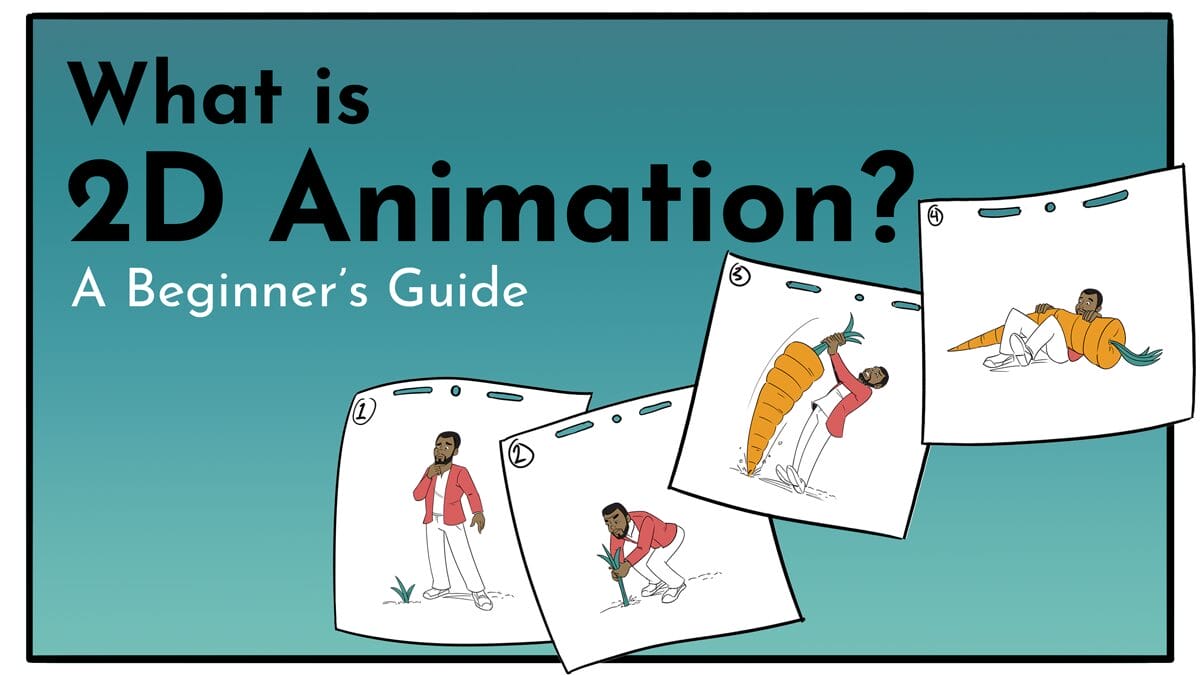
When it comes to animated visual storytelling, 2D animation is one of the primary styles. If you’ve ever seen classic Disney animated movies like Aladdin, 101 Dalmatians, The Jungle Book (and more), then you’ve seen 2D animation in action!
But what exactly is 2D animation, and how is it created?
Further, how does it differ from 3D animation, and how do you know which is right for your business’ creative needs? Read on to find out all this and more, courtesy of the animation experts here at Next Day Animations.
What is 2D Animation? The Basics
Animation has been a cornerstone of visual storytelling for decades, captivating audiences with its ability to breathe life into characters and narratives. But what is it?
At its core, 2D animation involves the creation of moving images within a two-dimensional space. Unlike its three-dimensional counterpart, which adds depth to characters and scenes, 2D animation relies on the x and y axes for movement. It’s a classic yet versatile form of animation that has stood the test of time.
Most 2D Animation is comprised of 2 key elements:
Frames: frames are the building blocks of movement. Each frame is a static image, and when played in sequence at a rapid pace, they create the illusion of motion. The smoother the transition between frames, the more fluid and engaging the animation becomes.
Layers: Imagine an animated scene as a stack of transparent sheets. Each sheet represents a layer, allowing animators to separate different elements within a scene. This layering technique enhances the flexibility of the animation process, making it easier to manage and modify individual components.
In the early days of animation, the process was entirely hand-drawn on paper. Think of iconic works from Disney’s golden age, where each frame was meticulously crafted by skilled artists. Or the very first 2D Animation in history – Steamboat Willie!

With the advent of technology, animators transitioned to digital tools. Animation software revolutionized the industry, making the process more accessible and efficient. In our studio, we leverage a combination of hand-drawing and vector graphics, which supports our ability to do custom 2D Character animation that aligns closely with our clients’ brands.
Digital 2D animation brings a new level of precision and allows for easier collaboration among animators, while the traditional approach laid the foundation for the art form and still holds a special place in animation history.
2D Animation vs. 3D Animation
In the vast landscape of animation, two prominent players take center stage: 2D animation and 3D animation. Let’s compare these two distinct forms, delving into their unique characteristics and the intricate processes that bring them to life.
2D Animation
- Maintaining a flat, two-dimensional appearance.
- Characterized by hand-drawn or digitally crafted visuals.
- Emphasis on artistic expression and stylized aesthetics
- Involves crafting each frame individually.
- Animators draw characters and scenes on a 2D plane, focusing on the x and y axes.
- Methods include traditional hand-drawing on paper or digital creation using animation software.
- Known for its artistic freedom and stylized visuals.
- Ideal for conveying emotion and artistic expression.
- Offers a timeless, classic feel.
3D Animation
- Adding depth and realism with three-dimensional models.
- Utilizing computer-generated imagery (CGI) for lifelike scenes.
- Offering a more immersive, modern visual experience.
- Unfolds in a three-dimensional virtual space.
- Animators manipulate digital models to create movement and scenes.
- Requires specialized 3D modeling and animation software.
- Provides a high level of realism and versatility.
- Suitable for complex scenes and intricate movements.
- Adaptable to various visual styles, from photorealistic to stylized.
While we’ve partnered with clients to produce some incredibly engaging 3D videos, these videos are really suited towards clients who need the intricacy and detail of 3D Animation to demonstrate their product for highly specific and professional audiences.
Choosing the Right 2D Animator: Questions to Ask
As you venture into the realm of 2D animation for your project, the choice of a skilled and compatible animator is paramount. The success of your animation not only depends on the concept and creativity but also on the expertise and approach of the person bringing it to life. Here are essential questions to ask when selecting the right 2D animator for your project:
1. Can you share examples from your portfolio that highlight your experience in 2D animation?
Before committing to an animator, it’s crucial to review their past work. A comprehensive portfolio showcases an animator’s style, versatility, and the range of projects they’ve tackled. Look for projects similar to yours to ensure their capabilities align with your vision.
2. What 2D Animation software and tools are you proficient in?
Different animators may have varying levels of proficiency with software and tools. Understanding the animator’s skill set ensures compatibility with your preferred tools and facilitates smoother collaboration. Familiarity with industry-standard software often indicates a commitment to staying current within the field.
3. How flexible are you in adjusting your approach to match the project requirements?
Adaptability is a key trait in a 2D animator. Projects may have unique demands, from visual style preferences to specific narrative elements. A flexible animator can adjust their approach to meet these requirements, ensuring that the final product aligns seamlessly with your vision.
4. What is your typical workflow for creating a 2D animation from concept to completion? How do you manage timelines, and what steps do you take to ensure the smooth progression of a project?
Understanding the animator’s workflow is crucial for project management. Inquire about their approach to turning a concept into a fully realized animation. Ask about their strategies for managing timelines, potential roadblocks, and the steps they take to ensure the project progresses smoothly. Clear communication and effective project management are key elements of a successful animation collaboration.


